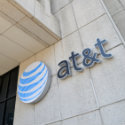
AT&T said it has commercially launched dynamic ppectrum sharing (DSS) on its 5G network. But the offering is only available to customers in parts of Texas across three different phones, and AT&T isn't saying what spectrum it's using.
And, as CNET reported, AT&T doesn't expect any performance improvements because of DSS. Citing comments from AT&T's Igal Elbaz, the publication reported that AT&T's 5G speeds, even with DSS, won't be much faster than its 4G LTE speeds. But "you're going to see improvement in speed" as time goes on, Elbaz noted.
Nonetheless, the news represents a feather in AT&T's cap and certainly moves the ball forward for the rest of a global wireless industry keen to transmit 5G into additional spectrum bands.
That's because DSS fundamentally changes the way wireless network operators can upgrade to a new generation of technology. In the transition from 3G to 4G, for example, operators had to reserve chunks of spectrum exclusively for customers on the new technology, even if there were only two or three of them. That's not an efficient use of spectrum if most customers are still on an older technology.
With DSS, that transition can be done dynamically. 4G and 5G users can share the exact same spectrum in 1 ms increments. "The software-based technology allows us to bypass the process of re-farming spectrum in the near term, which ultimately means a smoother transition and expedited 5G adoption," Elbaz explained in a post on AT&T's site.
Meaning, AT&T ultimately can use DSS to offer 5G across a wide range of spectrum bands without unduly impacting its 4G customers.
AT&T's initial 5G efforts have not used DSS. Instead, it first launched 5G in its unused millimeter wave [mmWave] spectrum and later launched it on a reserved chunk of its lowband 850MHz spectrum. That latter effort currently covers 120 million people and is scheduled to be nationwide this summer.
AT&T, of course, is not the only operator planning to launch DSS. Verizon and T-Mobile have both said they also plan to use the technology. Indeed, Verizon has said its nationwide launch of 5G on its lowband spectrum will be contingent on DSS.
But the way that Verizon's CEO Hans Vestberg has phrased Verizon's DSS rollout plans is strangely awkward: "Our technology team are progressing on that," Vestberg said recently at an investor conference. He said Verizon's network team will have DSS ready when Verizon's commercial team decides to turn the technology on. But he didn't say when that would happen within the course of 2020.
T-Mobile, for its part, deployed 5G nationwide on a dedicated chunk of its 600MHz spectrum, and is now expanding that offering using Sprint's 2.5GHz spectrum.
— Mike Dano, Editorial Director, 5G & Mobile Strategies, Light Reading | @mikeddano
About the Author(s)
You May Also Like












